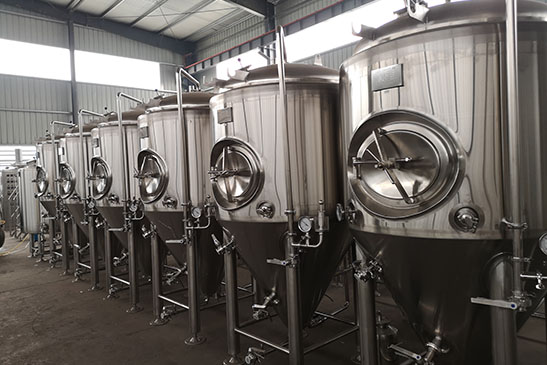How to Cleaning Brewing Equipment?
Beer equipment is ubiquitous in life, and because of beer equipment, people can brew a lot of beer. The cleaning of beer equipment is also related to the quality of brewed beer, so the cleaning of equipment cannot be ignored. Let Micet craft the engineer and share with you the cleaning method of beer equipment:
1. Selection of stainless steel beer equipment
2. Fermentation tank cleaning
3. Cleaning of beer brewing equipment hoses
4. Summarize
Selection Of Stainless Steel Beer Equipment
The most significant advantage of stainless steel is that it is not sensitive to acids and alkalis. But, the inner walls of the container must be as smooth as possible to ensure thorough cleaning and removal of all recurring dust. Special attention must be paid to the selection of equipment: smoothing of welds; polishing inner walls. The premise of corrosion resistance of stainless steel is that the surface metal is pure and can form an inert layer. Thus, shielded gas welding is required to avoid oxidation, and physical or chemical passivation (pickling) is also required. Stainless steel is not allowed to be used with other iron tools because of the deterioration caused by iron ions.

Fermentation Tank Cleaning
Don’t let the carbon dioxide out when the beer in the fermenter is empty. You can rinse twice with water to make sure there is no beer smell in the container. Carbon dioxide is emitted before the lye water is injected. The fermenter is placed in alkaline water, which needs to be covered by a bubble cap, regardless of whether it is hot or cold. Next time you make a beer, pump out the alkaline water dispenser wash, then rinse with water 3-4 times for 60-80 seconds each. The sampling port must be opened during cleaning. When cleaning is complete, close the tasting port. After the water pipes are removed, a good sampling port and connecting nozzle disinfection procedure needs to be established. When the alkaline water is pumped into the fermenter, it is necessary to open the sampling port and the air outlet, because there is carbon dioxide in the fermenter. If it is closed, the antacid and carbon dioxide will be offset, and the can is also easy to vacuum.
The dirt on the walls of the fermenter tank is a mixture of inorganic and organic matter, which is difficult to clean with a single cleaning agent. If only caustic soda is used for fermenter cleaning, it only serves to remove organics. Only when the cleaning temperature reaches above 80 ℃, can a better cleaning effect be achieved; when cleaning, single nitric acid is used for cleaning, which only has a certain effect on inorganic substances and is almost ineffective for organic substances. Thus, fermenter cleaning requires an alkaline cleaning solution and an acidic cleaning solution.
Fermentation tanks are cleaned first and then sterilized. The prerequisite for effective sterilization is that the dirt is cleaned. In actual production operations, it is always cleaned first and then sterilized.
Cleaning steps of the fermentation tank: discharge the residual carbon dioxide gas in the tank. Compressed air displaces carbon dioxide for 10-15 minutes. (depending on the compressed air flow). The yeast remaining in the fermenter was rinsed with clean water, and the fermenter was rinsed with hot water at 90°C to warm it up. Disassemble the discharge combination valve and aseptic sampling valve, use a special brush dipped in lye to clean it, and reinstall it. The fermenter is cleaned by circulating hot alkaline water over 1.5-2% at 80°C for 30 to 60 minutes. Rinse the fermentation tank with hot or warm water to make the discharge liquid neutral, and rinse the fermentation tank with cold water to room temperature. Wash with nitric acid solution with a concentration of 1% to 2% for 15 minutes. The fermenter was rinsed with water to neutralize the drain.
It is believed that through strict cleaning and disinfection, the stability of the brewed beer will be further improved.
Cleaning Of Beer Brewing Equipment Hoses
Most hoses are rubber hoses that pose a threat to connecting pipes. People are used to thinking about the state of the inside of the hose from the outside, which is often a big mistake. The internal demands of the pipes are very high and they are difficult to clean. Internal cracks and minor damage are hard to find. Pipes can only be cleaned with weak bases, oxidizing acids such as nitric acid and copper ions will increase the aging of pipes, so remember that pipes and copper pipes cannot be cleaned together. The quality of the rubber is often different, and some rubber tubes impart a specific amount of flavor to the beer, especially if it’s damaged or aged inside. So, individuals need to check the pipeline for food suitability.
Summarize
If you want to know more about our brewhouses, you can contact us by private message, welcome to discuss together!

评论
发表评论